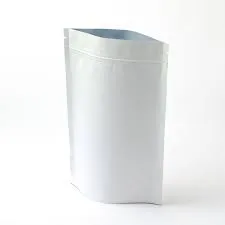- Afrikaans
- Albanian
- Amharic
- Arabic
- Armenian
- Azerbaijani
- Basque
- Belarusian
- Bengali
- Bosnian
- Bulgarian
- Catalan
- Cebuano
- chinese_simplified
- chinese_traditional
- Corsican
- Croatian
- Czech
- Danish
- Dutch
- English
- Esperanto
- Estonian
- Finnish
- French
- Frisian
- Galician
- Georgian
- German
- Greek
- Gujarati
- haitian_creole
- hausa
- hawaiian
- Hebrew
- Hindi
- Miao
- Hungarian
- Icelandic
- igbo
- Indonesian
- irish
- Italian
- Japanese
- Javanese
- Kannada
- kazakh
- Khmer
- Rwandese
- Korean
- Kurdish
- Kyrgyz
- Lao
- Latin
- Latvian
- Lithuanian
- Luxembourgish
- Macedonian
- Malgashi
- Malay
- Malayalam
- Maltese
- Maori
- Marathi
- Mongolian
- Myanmar
- Nepali
- Norwegian
- Norwegian
- Occitan
- Pashto
- Persian
- Polish
- Portuguese
- Punjabi
- Romanian
- Russian
- Samoan
- scottish-gaelic
- Serbian
- Sesotho
- Shona
- Sindhi
- Sinhala
- Slovak
- Slovenian
- Somali
- Spanish
- Sundanese
- Swahili
- Swedish
- Tagalog
- Tajik
- Tamil
- Tatar
- Telugu
- Thai
- Turkish
- Turkmen
- Ukrainian
- Urdu
- Uighur
- Uzbek
- Vietnamese
- Welsh
- Bantu
- Yiddish
- Yoruba
- Zulu
how thick is a piece of printer paper
How Thick is a Piece of Printer Paper? Understanding Paper Thickness
When we talk about printer paper, the thickness of the paper is an essential aspect to consider, especially if you're aiming for quality prints or specific textures. The thickness of printer paper is typically measured in mils (one mil is one-thousandth of an inch) or in grams per square meter (gsm), which provides a standardized way to determine the weight and thickness of the paper.
How Thick is a Piece of Printer Paper? Understanding Paper Thickness
For higher quality prints, such as brochures, presentations, or photographs, thicker paper is often preferred. Paper with a weight of 100 gsm to 120 gsm provides a more substantial feel and a better surface for ink adhesion, resulting in sharper images and more vivid colors. For example, a paper weighing 100 gsm is approximately 0.12 millimeters thick, while 120 gsm paper can be around 0.14 millimeters thick. The additional thickness helps to prevent curling and warping, especially when using inkjet printers.
how thick is a piece of printer paper

Another category of paper to consider is cardstock, which is significantly thicker than standard printer paper. Cardstock usually ranges from 200 gsm upwards, making it suitable for business cards, greeting cards, and other applications that require durability. A 200 gsm cardstock can be about 0.24 millimeters thick, while heavier cardstock can reach 0.5 millimeters or more. This thickness provides a sturdier surface that holds up against wear and tear.
It’s important to understand that the thickness of paper can impact not only the quality of printing but also the compatibility with different printers. Many standard inkjet and laser printers are designed to handle various paper weights. However, using paper that is too thick may lead to printer jams or reduced print quality. Always check the printer specifications before using thicker paper to ensure optimal performance.
In terms of aesthetics, the thickness of paper can also influence the overall look and feel of printed materials. Thicker papers tend to convey a sense of quality and professionalism, which is why they are often used for high-stakes documents and marketing materials. For example, a thicker paper can enhance the tactile experience of a business card, making it more memorable to recipients.
In conclusion, the thickness of a piece of printer paper can significantly affect printing outcomes, compatibility with printers, and the overall feel of finished products. Whether you choose standard copy paper or opt for heavier cardstock, understanding the nuances of paper thickness is crucial for achieving the desired results in your printing projects. By considering the weight and suitable applications of various paper types, you can enhance your printing experience and present your work in the best possible light.













